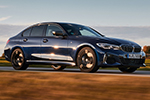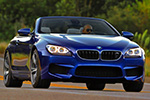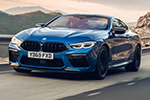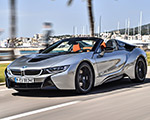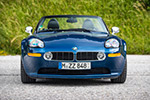Earlier this year, at CES 2025 in Las Vegas, BMW unveiled its most advanced infotainment system to date: the iDrive X. Now, at BMW Tech Days held recently at the BMW R&D Center in Beijing, BMW took the opportunity to demonstrate exactly how this global platform has been uniquely adapted to meet the specific needs and tastes of customers in China.
It’s important to note first that the iDrive X platform itself is universal, built on shared global software code that underpins BMW’s next-generation digital cockpit worldwide. But to deliver an intuitive and immersive experience truly relevant to Chinese customers, BMW’s local user-interface and user-experience teams—based primarily in Beijing, Shanghai, and Nanjing—have spent significant time adapting and tailoring the platform. BMW refers internally to this highly specialized design and development unit as the “Skylab team,” which remains the automaker’s largest full-stack interaction design group outside of Munich.
The “Visual Cone”
One of the standout design principles revealed during BMW Tech Days was the “Visual Cone.” Interaction Design Director Daisy Xu described this approach as carefully positioning the cockpit’s displays and controls so they naturally fall within the driver’s central field of vision. Humans typically have about 120 degrees of peripheral vision, Xu explained, “but the truly critical information—the information drivers depend on most—is concentrated within a much smaller 30-degree visual cone directly ahead. We designed the cockpit with this in mind, creating a subtle but effective way to guide a driver’s eyes naturally toward the road.”
Key Features and Apps for Chinese Customers
Beyond ergonomic enhancements, the Chinese iDrive X experience adds key features that directly align with local customer preferences. For example, BMW’s research showed that Chinese drivers typically prefer more immersive entertainment features and easier access to infotainment functions during daily commutes—often at lower speeds due to urban congestion.
To accommodate this, BMW’s China team integrated popular local streaming services such as iQiyi directly into the infotainment platform. As a result, Chinese drivers and passengers can now enjoy a cinema-like viewing experience from the central infotainment screen, especially beneficial during extended periods of stop-and-go or stationary traffic common in China’s urban environments.
In fact, BMW took an unconventional but thoughtful approach by unlocking more infotainment functionality at lower speeds, contrasting sharply with typical industry practice of restricting features while driving slowly. UX designer Andrea Feng highlighted this point specifically: “Instead of locking out features at low speeds—which is often the case elsewhere—we chose to provide greater functionality when traffic slows down or stops completely. This is a direct response to how driving really happens in China’s cities.”
Additionally, BMW’s Skylab team paid particular attention to culturally-specific experiences. One feature that resonated deeply with local media during the event was BMW’s unique approach to music playback. Recognizing the cultural importance of lyrics and poetic traditions in China, the new iDrive X prominently displays song lyrics clearly on the panoramic screen. As Feng explained, “In China, music appreciation goes beyond rhythm and melody. Lyrics often carry deeper poetic meanings, so we made sure the lyrics are visually highlighted, enabling passengers to appreciate songs fully and emotionally.”
A Redesigned Steering Wheel
BMW also took significant steps forward in cockpit hardware design for its Neue Klasse models, starting with a dramatically redesigned steering wheel. Unlike conventional BMW steering wheels, the new design features spokes at 6 and 12 o’clock positions. The steering was also carefully designed so drivers can comfortably grip it at the classic 3 and 9 o’clock positions. The positioning of haptic buttons and surfaces ensures effortless operation while keeping the hands on the steering wheel, a clear ergonomic improvement intended to enhance the overall user experience.
Furthermore, the central infotainment screen has been carefully repositioned, tilted precisely 17.5 degrees toward the driver. BMW made this adjustment after studying driver habits extensively, aiming to prevent critical information from being blocked by the steering wheel or driver’s arm. “We’ve angled the screen specifically to maintain clear visibility,” BMW explained, “ensuring crucial controls and information always remain in direct sight.”
The Panoramic Display with HUD
Perhaps the most visually impressive aspect of the iDrive X is the expansive Panoramic display. Spanning from A-pillar to A-pillar, this cutting-edge feature projects information directly onto specialized nano-coated glass, achieving crystal-clear resolution. BMW also addressed a common issue—visibility through polarized sunglasses—by incorporating optical enhancements that ensure drivers wearing polarized lenses can clearly read all projected information, removing a typical pain-point for many drivers.
One thing was clear at the end of the tech workshop. BMW’s thoughtful, locally-tailored adaptations of the new infotainment system underscore the brand’s understanding of its Chinese customer base. And now more than any other iDrive system before, the new Operating System X will deliver a genuinely engaging and culturally relevant experience tailored to drivers in China.
We will learn more about the iDrive X’s unique Chinese-market adaptations at the upcoming Shanghai Auto Show this April, so stay tuned!


















































